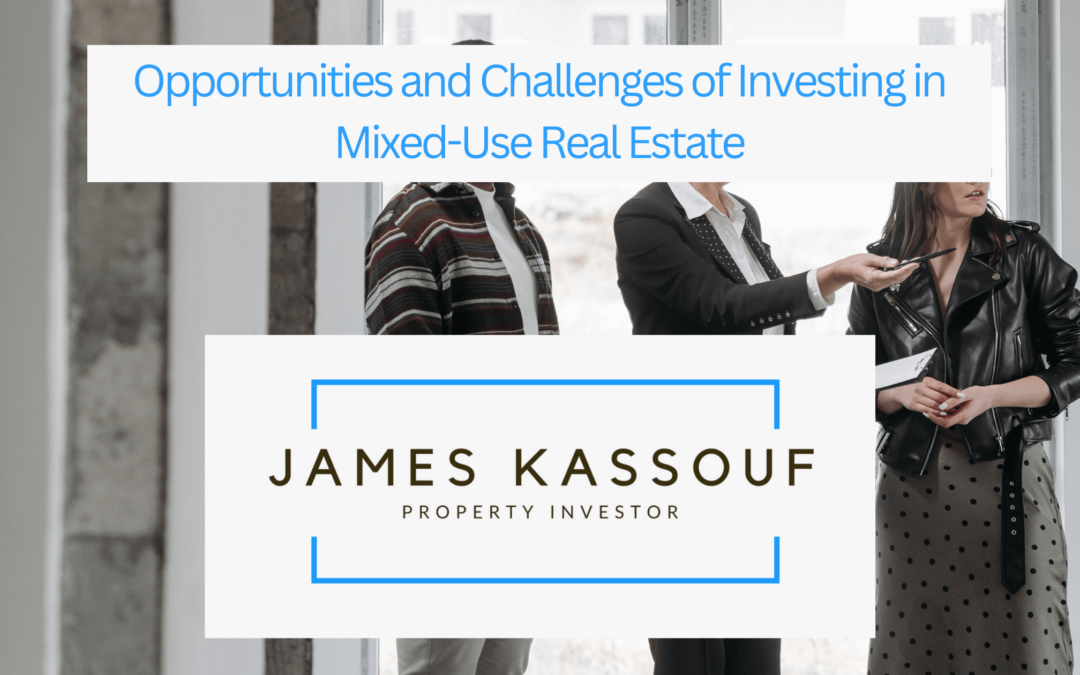Investing in mixed-use real estate has become attractive for investors looking to diversify their portfolios and capitalize on the growing trend of urbanization and sustainable living. These developments offer a blend of residential, commercial, and recreational spaces within a single project, creating dynamic and vibrant communities. However, like any investment, investors should consider opportunities and challenges before venturing into the world of mixed-use real estate.
Opportunities:
1. Diverse Revenue Streams:
One of the primary advantages of investing in mixed-use real estate is the opportunity to generate multiple revenue streams. A successful mixed-use development can include rental income from residential units, lease income from commercial spaces, and revenue from amenities such as gyms, restaurants, and entertainment venues. This diversity of income sources can provide stability to the investment and help mitigate risks associated with fluctuations in any market segment.
2. Increased Demand and Desirability:
Mixed-use developments often cater to the evolving preferences of modern urban dwellers. With a live-work-play lifestyle becoming increasingly sought after, these projects are more appealing to tenants and buyers alike. The convenience of having retail and entertainment options within walking distance and proximity to workplaces and public transportation makes mixed-use properties highly desirable, leading to higher occupancy rates and potential appreciation in property value.
3. Urban Revitalization and Community Building:
Investing in mixed-use real estate can contribute to urban revitalization and community building. These developments often breathe new life into underutilized areas or brownfield sites, transforming them into vibrant and sustainable neighborhoods. As a result, investors in mixed-use projects can enhance the overall quality of life for residents and contribute to the growth and prosperity of the surrounding community.
4. Adaptive Use and Flexibility:
Mixed-use developments offer a level of flexibility that traditional single-purpose properties do not. The ability to adapt and repurpose spaces over time in response to changing market demands allows investors to remain agile and resilient. For instance, if the need for office spaces decreases, those areas could be converted into additional residential units or repurposed for other commercial uses.
Challenges:
1. Complex Development Process:
Creating successful mixed-use developments is a complex process that requires collaboration between various stakeholders, including architects, urban planners, city officials, and community members. Mixed-use projects’ permitting and zoning requirements can be more challenging than single-use developments. Investors must navigate regulatory hurdles, which can add time and costs to the project.
2. Higher Initial Investment:
Mixed-use developments generally require a more significant initial investment than single-use properties due to the combination of different elements within the project. Financing such developments can be more challenging, and investors may need to secure funding from multiple sources. The higher upfront costs can also result in a longer time to achieve a positive return on investment.
3. Market Risk and Economic Cycles:
Investing in mixed-use real estate exposes investors to market risk and economic cycles. Downturns in specific sectors, such as commercial or residential, can impact the overall performance of the development. Additionally, economic recessions can affect consumer spending habits and rental demand, potentially leading to increased vacancies or decreased rental rates.
4. Management Complexity:
Managing a mixed-use property can be more complex than managing single-use properties. Each residential, commercial, or recreational component may have distinct operational requirements and tenant needs. Investors must be prepared to handle the challenges of managing different aspects of the development efficiently and effectively.
5. Competition and Oversaturation:
As mixed-use developments continue to gain popularity, the market may become more competitive and oversaturated in certain areas. Investors need to conduct thorough market research to identify locations with genuine demand and potential for growth, ensuring their projects can stand out and attract tenants and buyers.
Investing in mixed-use real estate offers promising opportunities for generating diverse revenue streams, capitalizing on increased demand for urban living, and contributing to community development. However, it also comes with its fair share of challenges, including complex development processes, higher initial investments, market risk, and management complexities. As with any investment, careful due diligence, market research, and a long-term perspective are crucial for successfully navigating these opportunities and challenges. For those willing to embrace the dynamic nature of mixed-use developments, the rewards can be financial and social, making it a compelling option for astute real estate investors.

